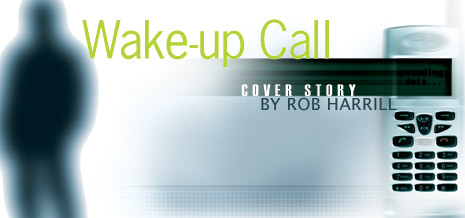

WTR leader George Carlo responded with a six-page letter to then-UW President Richard McCormick, complaining of the "libelous" letter to Microwave News and "a pattern of slanderous conduct by these men over the past several years." The letter closed with a threat of legal action and stated that Lai and Singh should be fired from the project. An answering letter from Vice Provost Steven Olswang stated that the University "encourages legitimate academic discourse" and would not intervene in the dispute.
While Lai and Singh were attempting to do their industry-funded follow-up study, the industry was looking for another opinion. Motorola approached Jerry Phillips, a researcher who worked in a lab at the Veteran's Administration Medical Center in Loma Linda, Calif. He was investigating electromagnetic fields and their biological effects. The lab had done work with Motorola before, and Phillips was interested. He made a proposal and was funded.
He sent people to Seattle to learn how to do the comet assay. And he decided to expose the animals in his experiment to actual cell phone frequencies. What they found were increases in DNA damage at some levels of exposure and decreases at others.
"That's not unusual," Phillips says. "It happens with chemicals. One dose can do one thing, while a higher or lower dose does the opposite. In this case, if you produce a little bit of DNA damage, you are stimulating the repair mechanisms and you could actually see a net decrease because the repair will be done. However, if you overwhelm the repair mechanism, then you could see an increase.
"Based on the data, I told them that we need to start looking at repair mechanisms," Phillips recalls.
 Motorola disagreed. Phillips says he was told the results were not ready for publication, was encouraged to do more work, and was offered additional money to continue the experiment.
Motorola disagreed. Phillips says he was told the results were not ready for publication, was encouraged to do more work, and was offered additional money to continue the experiment.
"I said as much as I would like the money, this part of the study is done," he recalls. "I said it's time to move on." The study was published in Nov. 1998. Once the findings were released, Phillips' source of funding dried up.
Since then, another group, working out of Washington University in St. Louis with industry funding, has tried to replicate the experiment, but without success. According to Lai and Phillips, that group is doing the study differently, including using a different technique to gauge DNA damage.
"They haven't properly replicated the work that Henry did, or that I did," Phillips says.
In the meantime, recent findings from overseas, more than 10 years after Lai's work, seem to finally be providing support for a closer look at cell phone radiation.
Last fall, the journal Epidemiology published research results from a Swedish group that showed an increase in a rare type of non-cancerous brain tumor among cell phone users on the side of the head where the phone was most often held.
In December, a pan-European organization released results from an extensive four-year study carried out by 12 research groups in seven countries. Known as the REFLEX study, that research found significant increases in DNA damage in human and animal cells exposed to cell phone radiation in the laboratory. While not a cause for alarm, the results, which have yet to be published, underline the need for further study, scientists said (see "Making Waves," page 4).
A spokeswoman for the UK-based Mobile Operators Association called the results "preliminary," adding that, "It is not possible to draw conclusions from this preliminary data."
In 2000, Sir William Stewart, former chair of a British group that looked into the cell phone debate issued a report urging "a precautionary stance" while scientific data is gathered. This January he repeated that warning, adding that children should not use the devices for the time being.
Industry spokesman Farren says his organization sticks to its position. "Any official precautionary measures need to be based on the science," he says. "The majority of studies have shown there are no health effects."
Go To: Page 1 | Page 2 | Page 3 | Page 4
Inside the Wave: Web exclusive on more cell phone radiation research
Making Waves: Worrisome results from European cell phone study
Old Medicine, New Cure?: Henry Lai's cancer research shows promise